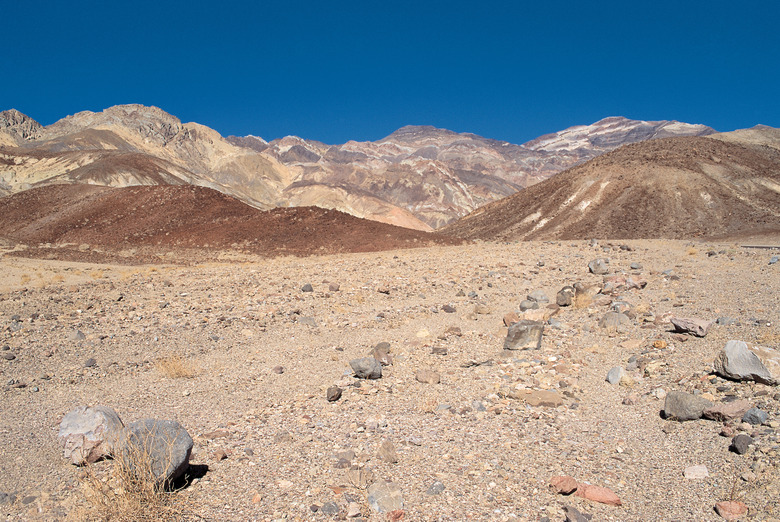About Heat Weathering
Weathering is a physical and chemical process that causes rocks and minerals on the Earth's surface to break down and decompose. As rocks expand and contract, the heat creates a physical weathering process where the rock splits apart into fragments. It also contributes to chemical weathering when moisture or oxygen in the atmosphere alters the chemical composition of rock minerals.
Thermal Stress
Thermal Stress
Rocks react to temperature changes during the day or between seasons by expanding or contracting. It is a long-term though noticeable effect in arid or desert regions like the Mojave Desert. But rocks are poor conductors of heat, so the temperature effects are limited to the outer few centimeters of their surfaces while the interior remains cool. The cycle of heating and cooling creates an accumulation of stresses called thermal fatigue that fragment the rock surface. Forest fires that can burn at temperatures of 800 degrees Celsius (1,472 degrees Fahrenheit) have the same effect – called thermal shock — over a short period and shatter the rock surface.
Granular Disaggregation
Granular Disaggregation
A rock's response to heat creates a thermal stress between mineral crystals. Rocks are made up of minerals with different thermal properties. Silicate compounds like quartz and feldspar make up 75 percent of the composition of granite, but quartz expands more than feldspar when heated. Minerals expand in preferred directions depending on the crystalline shape. The stresses between mineral grains grow into cracks that pull separate grains apart in a process called granular disaggregation.
Chemical Weathering
Chemical Weathering
Heat speeds up chemical weathering. Minerals can react with oxygen in the atmosphere or water from rain – even occasional rain in arid regions — to change their chemical composition. Metallic silicate minerals, such as iron-containing olivine, oxidize to form hematite, a red-colored iron oxide that coats rocks and is present in desert sands as lateritic soil. With continuing heat and moisture, hematite hydrates to form a yellow-colored iron oxide, limonite.
Exfoliation
Exfoliation
The combination of physical and chemical weathering caused or facilitated by heat results in layers of rock peeling away on the surface in the manner of an onion skin. Called exfoliation when seen on a wide scale, it also occurs on the surface of individual boulders and pebbles when layers of rock split away. This smaller-scale exfoliation is spheroidal weathering.
Cite This Article
MLA
Kielmas, Maria. "About Heat Weathering" sciencing.com, https://www.sciencing.com/heat-weathering-19386/. 24 April 2017.
APA
Kielmas, Maria. (2017, April 24). About Heat Weathering. sciencing.com. Retrieved from https://www.sciencing.com/heat-weathering-19386/
Chicago
Kielmas, Maria. About Heat Weathering last modified August 30, 2022. https://www.sciencing.com/heat-weathering-19386/
